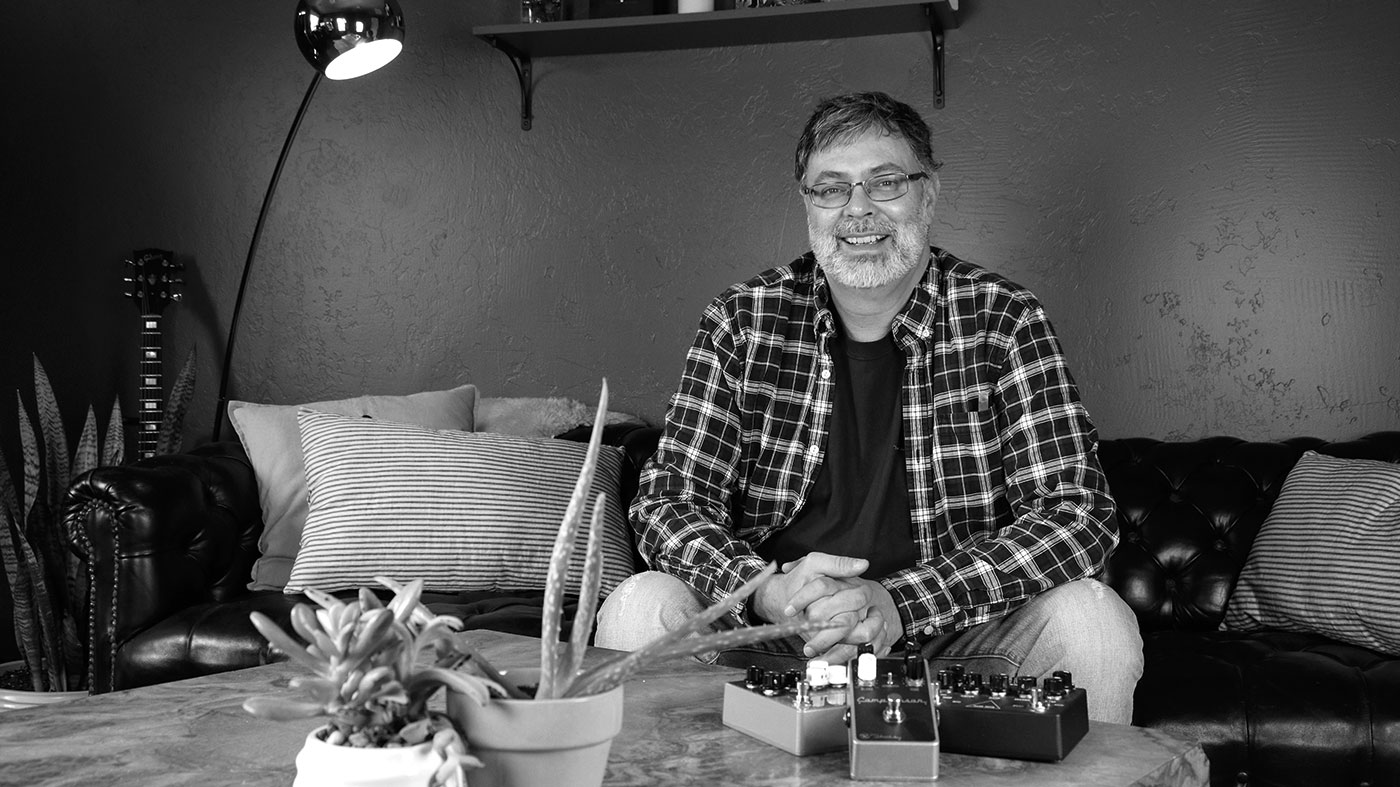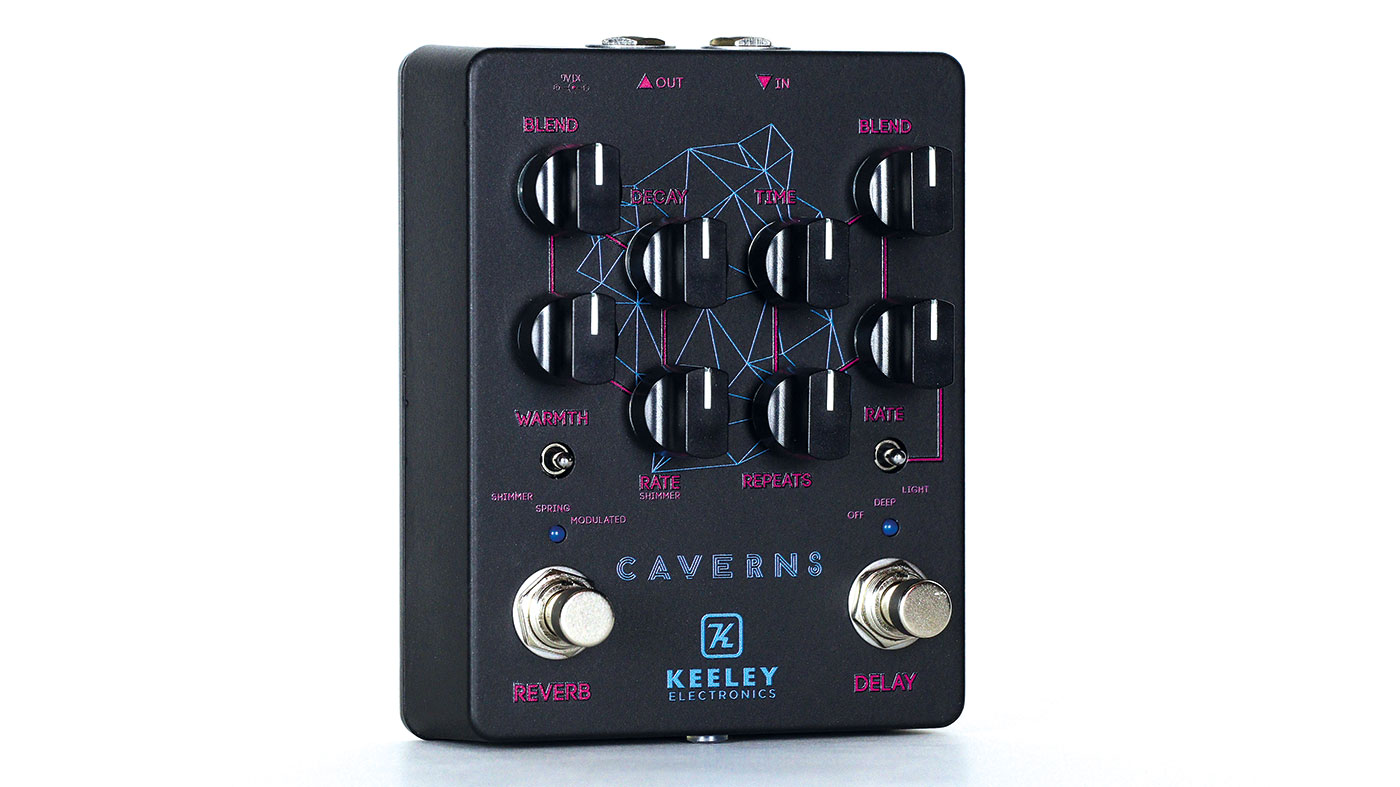
This month we speak to the compression connoisseur and main squeeze at Keeley Electronics, Robert Keeley...
1. What was the first pedal that you built and how did the design come about?
“My first design, in 1999, was a digitally controlled analogue delay and tuner, all-in-one box. It was a little ambitious (I hadn’t even cloned a Fuzz Face at that point!) but I built it in order to check enough boxes for a digital design college class I was taking.
“It used a microprocessor and had a keypad where you could enter the milliseconds [of delay time] for the bucket brigade chips. I tried to build a Fuzz Face after that but gave up! Afterwards, I built the Keeley Compressor - the first pedal I went to market with. That was inspired by Trey [Anastasio] from Phish and was based on a Ross Compressor.”
2. What’s your best-selling pedal and why do you think that is?
“Our best-selling pedal, since the earliest days of the company, is the Keeley Compressor. It’s what I’m known for, as well as effects mods. Our new compressor has been selling about a thousand per month. It keeps the lights on!”
3. Which notable players/bands have used/are using Keeley Electronics pedals?
Want all the hottest music and gear news, reviews, deals, features and more, direct to your inbox? Sign up here.
I love the nuances of vintage germanium fuzzes; they’re always fun because they’ve got so much character
“Some of my heroes like Adrian Belew, Peter Frampton and Billy Gibbons. It was very rewarding to hear that someone I admired like Walter Becker had four or five Keeley compressors. It’s also the people that regularly go out and make music, that aren’t necessarily so famous, that excite me too, like Eddie Heinzelman and some of the newer players like Daniel Donato - he’s got the D&M Drive and the Caverns pedals.”
4. Is there anything new on the horizon with Keeley Electronics?
“We’ve had a lot of success recently with the Workstation series of [multieffects] pedals. Some of our new releases are two units in one, like the D&M Drive. We have a compressor and overdrive combo pedal called the Aria coming out and a new overdrive, delay and reverb - I think we’re going to call it the Duet. There’s also a stereo delay, called the Stereo World, that we’ve been putting together recently for the NAMM show.”
5. What new pedal triggers your GAS most now?
“I really admire the bigger engineering companies like TC Electronic, Chase Bliss Audio, Source Audio and Strymon because of what they can cram together in such a small package. I also love JHS, Jack Deville’s Mr Black pedals and Brian Wampler’s effects boxes - great brands!”

6. What pedals are on your own effects board?
“I’ve been having a blast with our newer releases; right now on my board I’ve got a Compressor Plus and a D&M Drive going into a Dark Side and from there I go to the Caverns and an Omni Reverb. After that, I use a 30ms [Automatic Double Tracker] to split the signal into two amps.”
7. What’s your favourite vintage pedal and why?
“I love the nuances of vintage germanium fuzzes; they’re always fun because they’ve got so much character. I don’t know if I have a favourite pedal, but I really love the Mu-Tron III. From an engineering perspective it’s really interesting because it reads your playing attack - it’s so dynamic and expressive.”
8. If you had a three-pedal ‘desert island’ pedalboard what would be on it and why?
Use a decent power supply - I can’t state enough how important that is. It’s worth spending money on a decent power supply
“I would have our Monterey pedal, the new Aria pedal and the new Duet pedal because they’re all designed to go in a chain - like a package. Besides that... I would have to have a Mu-Tron III, a Line 6 DL4 and a Boss Blues Driver.”
9. What are your favourite effects pedal moments to be heard on record and why?
“Dark Side Of The Moon is top of the list. The phasing, flanging and fuzz tones that David Gilmour used were very, very cool. There’s not a ton of effects pedal sounds, but the sounds are so profound that it kind of set the stage for anything after it.”
10. What’s your best tone tip?
“I’ve been thinking about this a lot recently. I’ve noticed that guitars don’t always sound their best with the volume and tone all the way up. If you give certain pedals a little less signal they do something different. It doesn’t work in every case - for example, with compressors, generally - but the tone can be dramatically different. Listen with your eyes closed and use your ears!
“Also, use a decent pedalboard power supply - I can’t state enough how important that is. It’s worth spending money on a decent power supply, rather than another pedal.”
Guitarist is the longest established UK guitar magazine, offering gear reviews, artist interviews, techniques lessons and loads more, in print, on tablet and on smartphones
Digital: http://bit.ly/GuitaristiOS
If you love guitars, you'll love Guitarist. Find us in print, on Newsstand for iPad, iPhone and other digital readers


